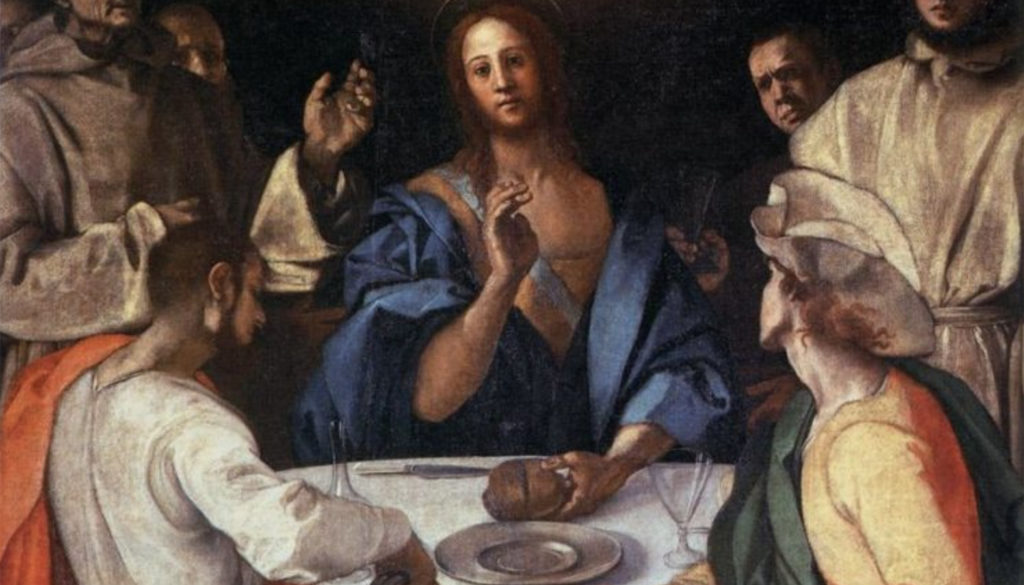In both the ancient and modern Church, Easter is the season of mystagogy — instruction in the mysteries. It’s the time when new converts are led to learn the meaning of the sacraments that they have just received.
The moment is established in St. Luke’s Gospel. On the morning of the first Easter Sunday, two disciples made a journey from Jerusalem to a village called Emmaus.
Early in their journey, the disciples were joined by an unknown companion who led them to an understanding of the ancient pattern in God’s plan — a pattern that had been newly fulfilled in the passion of Jesus.
The stranger was Jesus, of course, and he guided the disciples first by interpreting “all the Scriptures” for them. But the definitive part of the illumination was pure grace.
At the decisive moment, when the disciples came to own the knowledge of Jesus as the summit of God’s plan, the Gospel describes the process with a passive verb form: “He was known to them [or ‘was made known to them’] in the breaking of the bread.” It was Jesus’ eucharistic action that brought about the disciples’ recognition.
What St. Paul calls “the plan of the mystery hidden for ages” was now revealed to the disciples, though not in a way they could see with their eyes. For immediately, Jesus “vanished out of their sight.” The mysteries of Christ’s life had fulfilled the signs of the Old Testament.
This fulfillment did not lead the disciples immediately into the heavenly vision. It led them to a reprise of Jesus’ covenant meal. On the night he was betrayed, Jesus “took bread … broke it and gave it” to his apostles, saying, “This is my body which is given for you” (Luke 22:19).
His physical body they did not recognize; but after he had prepared them by interpreting the Scriptures, he “was known to them” — by faith, not sight — in the breaking of the bread.
This is mystagogy. Christ’s life had fulfilled the types in a sacrifice that was “once for all” (Hebrews 9:26). But the hidden mysteries of his life were now extended in time through the sacraments. After his resurrection, the ordinary way the disciples came to know the mysteries of Jesus was through the breaking of the bread.
This is borne out in the rest of the New Testament. Large swaths of 1 Corinthians are explicitly mystagogical, describing the Mass and baptism, but also tracing their antecedents in the Old Testament.
In the sacraments, Jesus “was made known” to his disciples, but it was more than a knowledge of doctrine and facts.
The New Testament refers to the encounter as a “koinonia” — a communion. That’s the term used in Acts (2:42) to describe the Church’s eucharistic fellowship. Paul uses the same word, twice, to describe the Christian’s reception of the eucharistic body and blood (1 Corinthians 10:16).
The events of Christ’s life pass over into the mysteries, where they are continued in our lives.
That’s why every Mass conforms to the pattern established at Easter: the opening of the Scriptures followed by the breaking of the bread.

